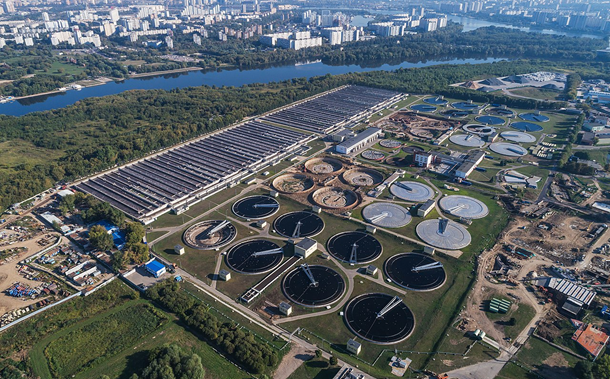Study on Shear Behavior of Reinforced Concrete Beams Confined with Reinforcing Meshes
Downloads
This study reveals the results of a numerical simulation performed using the ABAQUS/CAE finite element program. The study aimed to provide a simulation model that can forecast the shear behavior of reinforced concrete beams confined with reinforcing meshes. Limited numerical studies have been conducted using geogrid or FRP mesh as shear reinforcement, with limited representation accuracy and limited material quality. The results were compared to published experimental findings in the literature. The finding of the finite element model and the experimental results were highly comparable; consequently, the model was determined to be valid. Following this, the domain of numerical analyses was broadened to include the investigation of many aspects, like the material of reinforcement mesh, the angle of inclination of mesh strip, and the number of mesh strips. The results show that the inclined strip beams gave ultimate loads greater than the beams with vertical strips, where the ultimate load for beams with inclined strips was higher than that for beams with vertical strips by 5.6, 2.5, and 9.4% for beams with geogrid, geotextile, and GFRP mesh, respectively. The smaller the strip width and the larger the number, the better. Beams with inclined strips (45°) gave higher ductility indexes than similar beams with vertical strips. Beams with six strips (width of 50 mm) gave higher ductility indexes than similar beams with four strips (width of 75 mm).
Downloads
[1] Zhang, K., & Sun, Q. (2018). The use of Wire Mesh-Polyurethane Cement (WM-PUC) composite to strengthen RC T-beams under flexure. Journal of Building Engineering, 15(1), 122–136. doi:10.1016/j.jobe.2017.11.008.
[2] Mebrahtom, M., Fissha, Y., Ali, M., Gebretsadik, A., Kide, Y., Nguse, Z., Gebrehiwot, Z., Flores, E. S., Avudaiappan, S., & Ikeda, H. (2024). Comparative study of eco-friendly wire mesh configurations to enhance sustainability in reinforced concrete structures. Scientific Reports, 14(1), 8818. doi:10.1038/s41598-024-59050-2.
[3] Abdulkareem, B. F., Izzet, A. F., & Oukaili, N. (2021). Post-Fire Behavior of Non-Prismatic Beams with Multiple Rectangular Openings Monotonically Loaded. Engineering, Technology and Applied Science Research, 11(6), 7763–7769. doi:10.48084/etasr.4488.
[4] Augustino, D. S. (2024). Shear Performance of Deep Concrete Beams with Openings Using Waste Tyre Steel Fibres: FEM and ANN Analysis. Civil Engineering Journal, 10(8), 2422–2449. doi:10.28991/CEJ-2024-010-08-02.
[5] Abdulkareem, B., & Izzet, A. F. (2022). Serviceability of Post-fire RC Rafters with Openings of Different Sizes and Shapes. Journal of Engineering, 28(1), 19–32. doi:10.31026/j.eng.2022.01.02.
[6] Mohammed, S. D., Salman, H. M., Ibrahim, T. H., Oukaili, N. K., & Allawi, A. A. (2025). On the Impact of Lacing Reinforcement Arrangement on Reinforced Concrete Deep Beams Performance. Civil Engineering Journal (Iran), 11(2), 726–745. doi:10.28991/CEJ-2025-011-02-019.
[7] Allawi, A. A., & Ali, S. I. (2020). Flexural behavior of composite GFRP pultruded I-section beams under static and impact loading. Civil Engineering Journal (Iran), 6(11), 2143–2158. doi:10.28991/cej-2020-03091608.
[8] Triantafillou, T. C. (1998). Shear strengthening of reinforced concrete beams using epoxy-bonded FRP composites. ACI Structural Journal, 95(2), 107–115. doi:10.14359/531.
[9] Abdulkareem, B. F., & Izzet, A. F. (2022). Residual post fire strength of non-prismatic perforated beams. IOP Conference Series: Earth and Environmental Science, 961(1), 12002. doi:10.1088/1755-1315/961/1/012002.
[10] Tetta, Z. C., Koutas, L. N., & Bournas, D. A. (2015). Textile-reinforced mortar (TRM) versus fiber-reinforced polymers (FRP) in shear strengthening of concrete beams. Composites Part B: Engineering, 77, 338–348. doi:10.1016/j.compositesb.2015.03.055.
[11] Tetta, Z. C., Koutas, L. N., & Bournas, D. A. (2016). Shear strengthening of full-scale RC T-beams using textile-reinforced mortar and textile-based anchors. Composites Part B: Engineering, 95, 225–239. doi:10.1016/j.compositesb.2016.03.076.
[12] Majumder, S., Nanda, R. P., & Saha, S. (2018). Experimental and numerical investigation of RC beam strengthened with geogrid confinement. Conference proceedings on 16th symposium on earthquake engineering (16SEE), 20-22 December, 2018, IIT Roorkee, India.
[13] Yalciner, H., Kumbasaroglu, A., & Ergun, U. (2018). Effects of Geo-grid and Conventional Stirrups on Reinforced Concrete Beams With Polypropylene Fibers. Structures, 13, 230–242. doi:10.1016/j.istruc.2018.01.003.
[14] Erfan, A. M., & El-Sayed, T. A. (2019). Structural Shear Behavior of Composite Box Beams Using Advanced Innovated Materials. Journal of Engineering Research and Reports, 5(2), 1–14. doi:10.9734/jerr/2019/v5i216920.
[15] Zhang, H. Y., Yan, J., Kodur, V., & Cao, L. (2019). Mechanical behavior of concrete beams shear strengthened with textile reinforced geopolymer mortar. Engineering Structures, 196, 109348. doi:10.1016/j.engstruct.2019.109348.
[16] Li, W., Tang, S., Huang, Z., Yang, X., Shi, T., & Xing, F. (2020). Shear behavior of concrete beam reinforced in shear with carbon fiber-reinforced polymer mesh fabric (CFRP-MF) configuration. Engineering Structures, 218, 110828. doi:10.1016/j.engstruct.2020.110828.
[17] Al-Bazoon, M., Jaafer, A., Haidar, H., & Dawood, A. (2022). Shear Strengthening of Reinforced Concrete Beam Using Wire Mesh–Epoxy Composite. Civil Engineering Journal (Iran), 8(6), 1205–1226. doi:10.28991/CEJ-2022-08-06-09.
[18] Li, W., Tang, S., Huang, X., Liu, W., Yang, X., & Shi, T. (2022). Carbon fiber-reinforced polymer mesh fabric as shear reinforcement in reinforced concrete beams. Journal of Building Engineering, 53, 104433. doi:10.1016/j.jobe.2022.104433.
[19] Yang, X., & Huang, J. Q. (2024). Shear Behaviour of RC Beams Strengthened using CFRP Grid-ECC/PMM Matrix Composites: An Experimental and Numerical Investigation. Journal of Advanced Concrete Technology, 22(1), 1–13. doi:10.3151/jact.22.1.
[20] Hashemi, S. S., Rezaei, S., Matin, M., & Vaghefi, M. (2024). Experimental investigation on the compressive behaviour of concrete confined by glass fibre geogrid mesh. International Journal of Structural Engineering, 14(3), 252–270. doi:10.1504/IJSTRUCTE.2024.139776.
[21] Guo, X., Zhang, Z., Sun, Q., & Tian, P. (2024). Numerical Analysis on Flexural Shear Behavior of Reinforced Concrete Beams Strengthened with Fiber-Reinforced Polymer Grid and Engineered Cement Composites. Buildings, 14(8), 2304. doi:10.3390/buildings14082304.
[22] Huang, Z., Shen, J., Lin, B., Miao, X., & Cheng, Z. (2024). Experimental and numerical investigation on shear behavior of concrete beams reinforced with CFRP grid shear reinforcements. Composite Structures, 349–350, 118552. doi:10.1016/j.compstruct.2024.118552.
[23] Kirthiga, R., & Elavenil, S. (2024). Performance evaluation of pre-damaged reinforced concrete beams strengthened with knitted glass fabric reinforced cementitious matrix: Flexure and shear behaviors. Structures, 70, 107744. doi:10.1016/j.istruc.2024.107744.
[24] Zhang, Z., & Lan, J. (2025). Study on Shear Behavior of Reinforced Concrete Beams Strengthened with FRP Grid–PCM Composite Reinforcement. Applied Sciences, 15(11), 6103. doi:10.3390/app15116103.
[25] Majumder, S., & Saha, S. (2021). Shear behaviour of RC beams strengthened using geosynthetic materials by external and internal confinement. Structures, 32, 1665–1678. doi:10.1016/j.istruc.2021.03.107.
[26] ABAQUS. (2019) Analysis User’s Manual, Version 6.14. Dassault Systemes Simulia, Inc., Providence, United States.
[27] Kachlakev, D. I., Miller, T. H., Potisuk, T., Yim, S. C., & Chansawat, K. (2001). Finite element modeling of reinforced concrete structures strengthened with FRP laminates. No. FHWA-OR-RD-01-XX, Oregon Department of Transportation Research Group, Salem, United States.
[28] Hanan, A. K., Muttashar, M. D., Abid, S. R., Yosri, A. M., Alsharari, F., & Deifalla, A. farouk. (2023). Flexural performance of concrete beams internally reinforced with steel, geogrid and GFRP meshes. Journal of Materials Research and Technology, 24, 9156–9170. doi:10.1016/j.jmrt.2023.05.146.
[29] Al-Salloum, Y. A., Elsanadedy, H. M., Alsayed, S. H., & Iqbal, R. A. (2012). Experimental and Numerical Study for the Shear Strengthening of Reinforced Concrete Beams Using Textile-Reinforced Mortar. Journal of Composites for Construction, 16(1), 74–90. doi:10.1061/(asce)cc.1943-5614.0000239.
[30] Mansur, M. A., Huang, L. M., Tan, K. H., & Lee, S. L. (1992). Deflections of reinforced concrete beams with web openings. ACI Structural Journal, 89(4), 391–397. doi:10.14359/3019.
- Authors retain all copyrights. It is noticeable that authors will not be forced to sign any copyright transfer agreements.
- This work (including HTML and PDF Files) is licensed under a Creative Commons Attribution 4.0 International License.![]()














